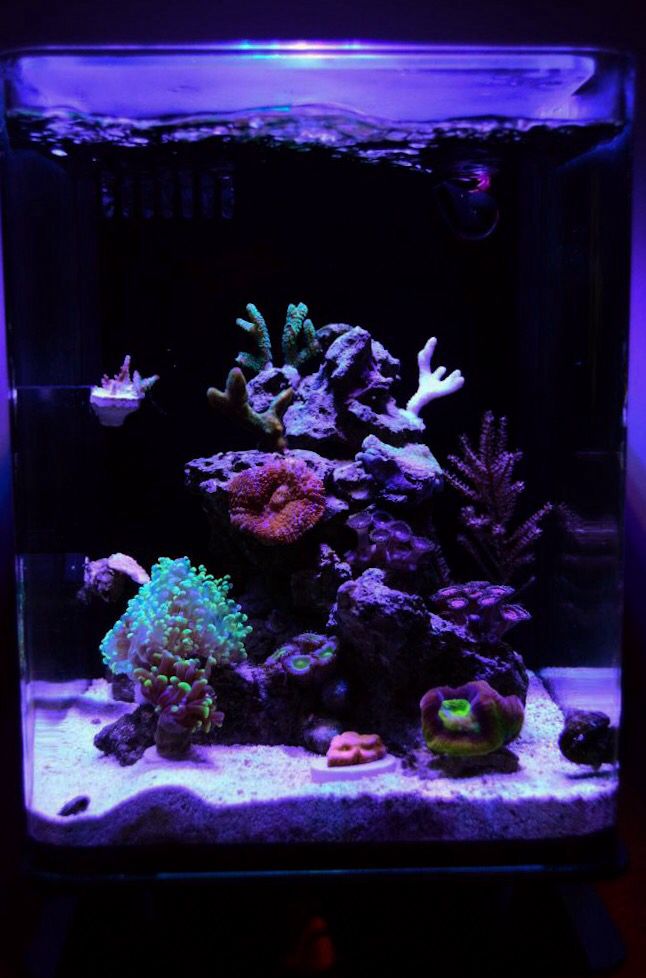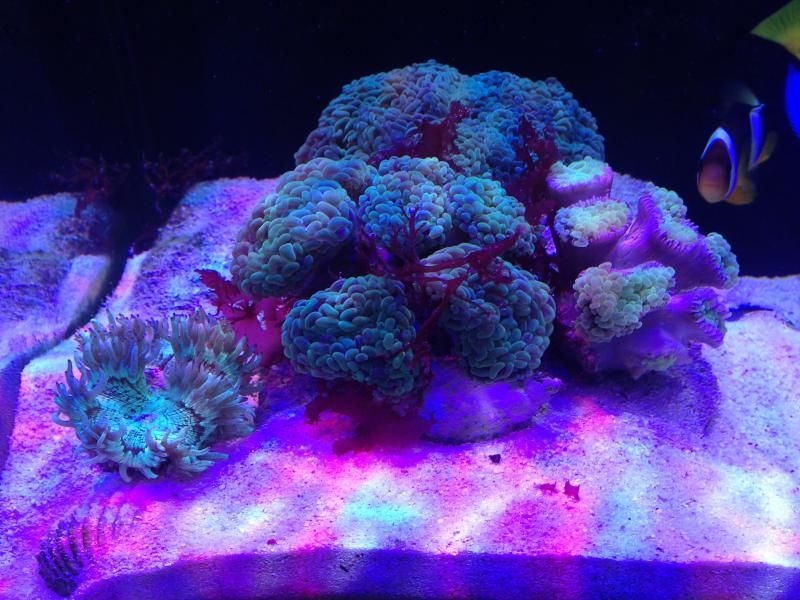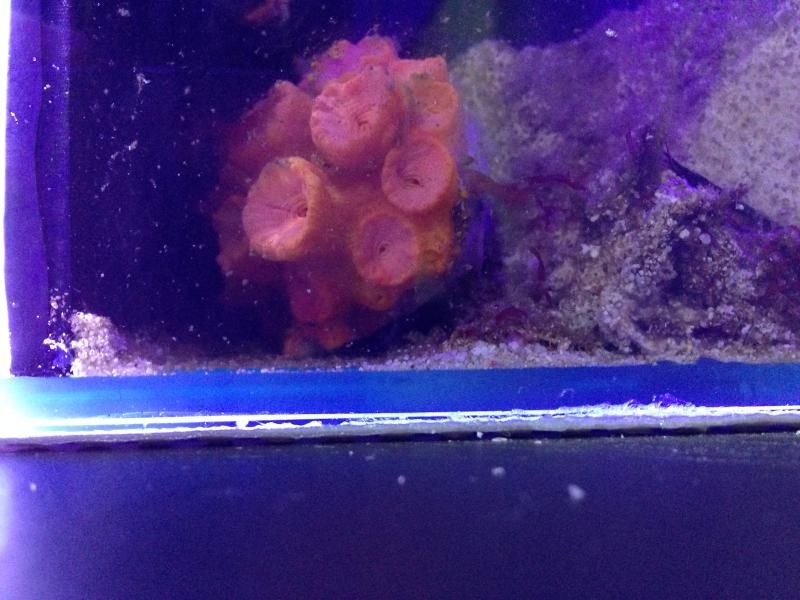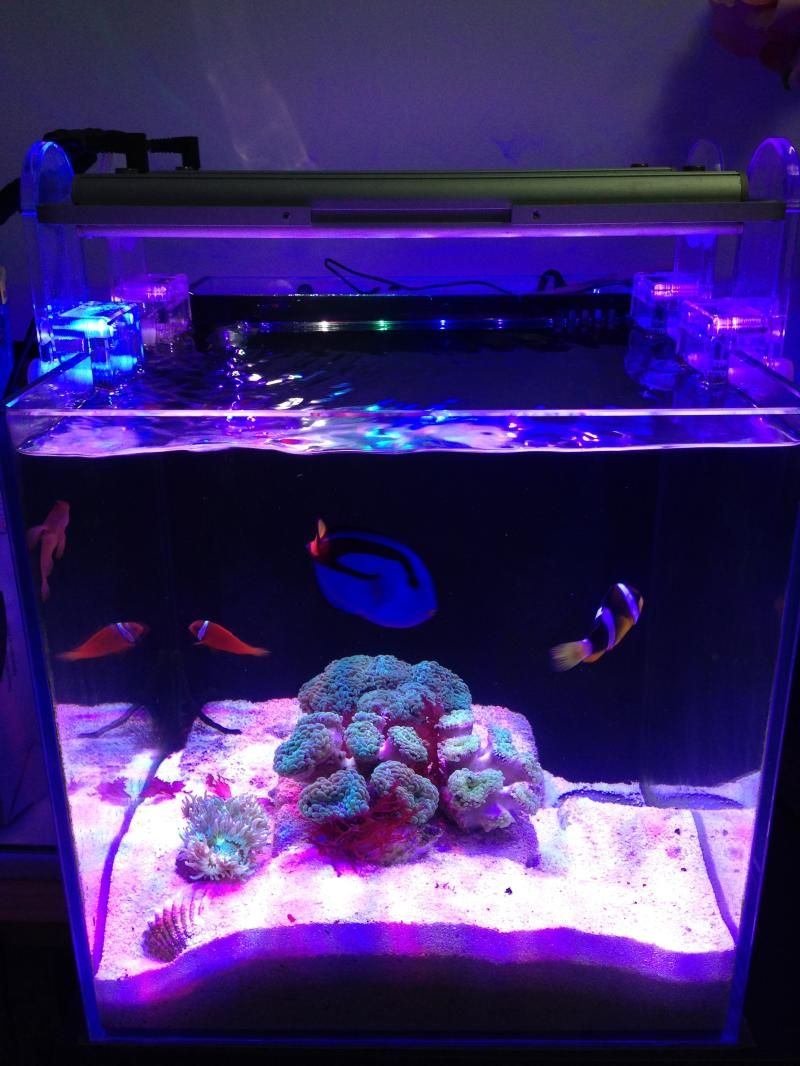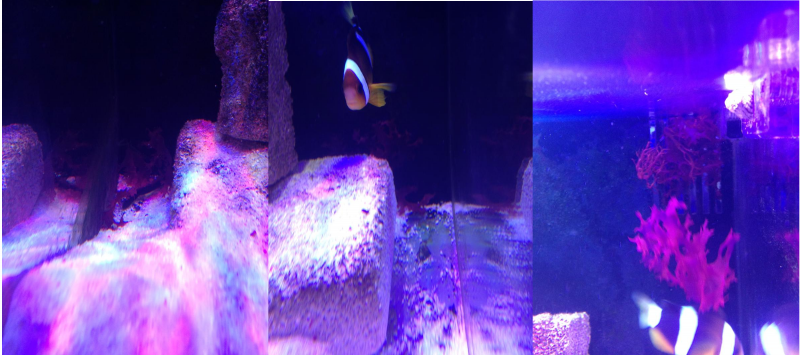Nano. Pico. Shallow reef. Tall reefs. And so on and so on.
Visiting local fish stores, forums, facebook groups, or from my general reef aquarium guide - you would definitely have stumbled upon at least some of these terms. But what do they all mean? More importantly, how do they distinguish from each other, and what part do they play in terms of your stock and equipment purchases?
Read on to find out...
The Sizes
So let's start with with the different sizes and see what they mean. Note that the volumes listed are of my own classification. Everyone will have a different volume limit for each size of aquariums.
"A Reef Tank"
A Red Sea Reefer 450, your average 'everyday' reef aquarium.
Not so much a proper name, but most reef tanks that you see in fish stores as displays, or that you may purchase yourself fall generally in the realm of 40-200 gallons (roughly 150-750 litres). These aquariums will fall within the average reefer's budget and effort.
In general if you want to be able to easily and fully replicate the reef (to a certain degree), this is the way to go. The size also allows you to quite easily go for a variety of equipments to support your aquarium.
Really there is not much to say about these, besides that they are your average, everyday ones.
Nano Aquariums
This is a custom-made nano aquarium. Mine, actually.
Nano aquariums are the smaller version of your everyday aquariums. In general, they are 4-40gallons (15-150 litres), and are what I would recommend for beginners. Besides the fact that they are quite easy to handle (carry around and all that, especially the smaller size ones), they still allow for many of the same live stock that can be housed in normal-sized aquariums to be housed within, especially in terms of cnidarians such as corals and anemones. The general occupants though, that most people go for, are Clownfish due to their size and activeness. I myself have two in my nano.
Equipment-wise, nano aquariums can use much of the same aquariums a 'normal' aquarium can, from skimmers to biopellet reactors to heaters to whatever else. This is opposed to the smaller size aquariums, whereby equipment for them may not be readily available.
The one issue with nano aquariums is that water parameters swing more easily than in larger aquariums. For example, accidentally adding the same amount of additive to a larger aquarium will change parameters much less so than in a nano aquarium. The same amount to raise calcium in a 500 litre fish tank by 10ppm can raise it by 100ppm in a 50 litre fish tank. Additionally, evaporation is generally an issue, and so is keeping temperatures down - there's not too many chillers made for nano-aquariums, and fans can really increase evaporation.
However, they are relatively minor issues, only care is required to always make measurements correctly, and keep on top of top-offs will be all that is necessary.
They can be a lot cheaper than larger sized tanks too, when they can run smoothly with a lot less equipment. Reactors, skimmers are generally not necessary. Neither are plumbing and complicated construction work. The reduction in equipments needed, means that new hobbyists can jump in without too much to worry about, but can still add them on later on to learn about their functions, eventually jumping on to the more complicated stuff.
My aquarium has one filter media - Marine Pure, and that's it. I rely on the Marine Pure to take care of most of the filtration, and water changes to replenish everything. For a 36 litre aquarium, even a 20% water change per week isn't much. It is that easy. Potentially.
So in conclusion, nano aquariums are:
-Relatively cheaper.
-Takes less effort to maintain.
-Requires less equipment.
-Can house much of the same live stock as larger aquariums.
But:
-Are prone to larger swings in parameters.
-Can have more of an issue with evaporation.
Note that it is these factors that makes a nano aquarium. Sometimes due to the specific dimensions of a tank or the setup that it acts more like a pico or a 'normal' aquarium, but either way it doesn't matter. Just focus on the factors of the aquarium, and treat it as the right type of aquarium.
Pico Aquariums
UWdanno's Innovative Marine NuvoAquarium Pico 4, as seen in his tank journal.
Pico aquariums is where it gets hard, real quick, real fast. Far more than a nano aquarium, pico aquariums are even more susceptible to parameter swings and evaporation. One of the major issue is temperature, when it can fluctuate drastically in conjunction with the environment.
Therefore, pico aquariums generally require a lot of care to make sure everything is maintained properly. At the same time, this is where equipments start to really become an issue. Many equipment just aren't made to work on such a small sized aquarium. Some heaters, for example, simply will not fit in a pico aquarium due to its length. After all, pico aquariums are about 0.4-4 gallons (1.5-15 litres), which in terms of dimensions, are usually restricted to below the 20cm per side range.
At the same time, the size heavily restricts stocking as well. Few fish can go into pico aquariums, and really, they shouldn't.
Though difficult, the challenge in setting up a reef in such a small volume of water is what lures many hobbyists into going for this size aquarium. To ensure that everything is stable, many even go as far as to set up monitoring equipments and complicated top-off, dosing and filtration systems to keep these reefs alive. Combined with the fact that certain products have to be custom-made, or made in limited amounts for these size tanks - and therefore being more expensive - the costs of running and maintaining a pico aquarium can be very high.
But that is the lure of it. Will you take the plunge?
Bonsai/Micro Aquariums
Technically bonsais are plants in containers, but whatever. The term stuck.
Bonsai/Micro Aquariums are 'miniature' reefs in tiny, tiny containers. Like, <0.4 gallons (1.5 litres). No, that is not a lot of space, at all. In general even harder to do than pico aquariums - as your equipment selection will be even more limited. There are hardly any equipment designed FOR these sort of aquariums, and you will have to search hard for the right products.
Live stock selection is even more limited. Practically no marine fish will live in there, and even crustaceans and molluscs are limited. Cnidarians too, in fact! Many anemones will grow way too large for that size aquarium.
In fact, I haven't seen a bonsai/micro aquarium for such a long time, that I don't even have a picture to post.
So basically, bonsais/micros are like picos, except even harder!
Large Aquariums
A large reef tank within a restaurant. This one in particular has fake corals, mainly because the goal is to keep an Epaulette Shark in there.
Moving towards the other end of the spectrum, are large aquariums. 200-1000 gallon (750-3750 litres). When you get to this size you can start to push boundaries with fish, and keep large animals such as sharks in there.
Maintenance and support starts to become a major effort, and therefore can only be sustained by the most avid of hobbyists. Towards this end equipment does become a problem once again, as there are less and less products designed for such sizes.
Things have to be in sets - heaters, return pumps, water circulators, sumps even to support such tanks.
This also translates to of course, more things that can break down, and even one damaged equipment can cause the entire tank to fail.
Regular maintenance is therefore a must! The above aquarium shown is actually a fish-only setup, so it isn't as demanding. But imagine if all those corals are real! There would be a lot of work involved in feeding them, for sure.
In short, large aquariums will cost you an arm and a leg, and will require a lot of time and effort to keep it running.
XL Aquariums
On the other end of the spectrum to bonsais/micros, are the XL aquariums. Greater than 1000 gallons (3750 litres), these beasts are not to be done up on a whim. They require careful planning, and a lot of cash.
Practically everything will have to be custom-made or ordered specially for it.
Half of the Majestic Aquariums team standing in front of their 5300 gallon (20000 litre) shark tank. And that's at the smaller end of the XL aquarium spectrum!
The aquarium at Majestic Aquariums took approximately half a year to build, and another half to really get going. And that's still not with real corals! There are four sumps upstairs, filtering this shark tank. There is also a giant skimmer within one of the sumps, whilst another is chock full of biological filter media.
Lights had to be specially ordered in, and same as the pumps. They are both heavy-duty, and I personally don't even know all the specs to list them out.
A lot of work is involved, and perhaps in terms of private aquarists, the number of people with such large tanks can be counted on one's fingers!
In short, if you just want to chillax and enjoy a reef, stick to the nano or normal sized aquariums.
The Dimensions
There are certain dimensions of aquariums that deserve a special mention. I'm not going to go into detail in regards to the 'standard' shape, because well, it is standard. But let's see how the different dimensions pan out.
Tall Aquariums
Tall aquariums are those whereby the height is irregularly lengthier than the sides.
This is sometimes a requirement, such as with Centropyge Angels, whereby their breeding behaviour requires a tall water column for them to rise up in.
Tall aquariums poses both an issue, and for interesting choices - as in regards to corals, lighting could be an issue. Many aquarium lights do not have the depth-punching capability needed to push all the way to the bottom, and many that do will be too bright towards the water surface. This means that light-loving corals may not do well towards the bottom, and light-adverse corals may not do well towards the top.
At the same time, this poses an opportunity to create a differing coral landscape, with a gradient of light-loving to light-adverse corals from the top, going towards the bottom.
Usually though, unless one is specifically looking to breed Angelfish, one won't go tall.
So in regards to corals (and anemones and the likes), whether or not tall aquariums are for you will depend on what species you want to keep.
Fish are quite similar - some only dwell towards the bottom, others will travel up and down, whilst there are those that prefer to perch towards the top solely.
The only true issue is rocks - as it is hard to stack rocks high without going wide at the same time. Glues do tend to be the solution to this, as is backbones of steel or whatever. Still, there's always a fear of the entire aquarium ending if a rock towards the top happens to come loose and fall down.
Cleaning, of course, is another issue. Some aquariums can be up to 3ft high, and just imagine reaching down towards the bottom to clean the tank... especially when there's not a lot of width for you to squeeze in to begin with.
That's why tall aquariums are not so popular, and why I don't have a picture or video of one. :(
Shallow Aquariums
The opposite of tall aquariums are the shallow aquariums, or usually referred to as 'shallow reefs'.
An Innovative Marine NuvoAquarium Shallow Reef 120. Video straight from the manufacturer themselves.
Shallow reefs are where the height of the aquarium is actually much lower than that normally expected.
This provides a number of advantages, such as a more evenly distributed light gradient, whereby organisms at the bottom of the aquarium would not receive much less light compared to those towards the top. Additionally, live rock need not be stacked high, removing the need for complicated scapes.
Fish are also a lot more 'interactive', with those normally preferring the top or bottom layers of the water to meet each other more frequently, allowing for more varied behaviour.
Finally, shallow reefs offer viewing from the top - along with the sides. This is a big advantage, as many corals look best when viewing the side that face the light the most often, which is obviously the top.
Shallow reefs are therefore gaining in popularity, and are amongst some of the best display tanks there is.
Long Aquariums
30 gallons, but 3ft long. Compare that to the 30 gallon below.
Long aquariums are those that are longer than generally expected, such as Innovative Marine's NuvoAquarium Fusion Micro 30L.
The length is a major advantage, as it in fact allows for a lot more fish choices than that of a shorter aquarium (even if it is the same volume). This is as many fish are not suitable for 'smaller' aquariums simply because they need a large length to swim continuously. Long aquariums help do just that.
One thing to consider is lighting - you don't want something to immense or powerful, yet has to be long enough to light the entire aquarium. In a way, it may cost you a lot more to light such a tank, compared to that of a cube.
Otherwise there really isn't too much to a long aquarium.
Cube Aquariums
And cube-ish ones as well. They are interesting because all sides have the same length, and are generally designed so that any side viewed in from shows something amazing - as opposed to normal tanks, whereby viewing is generally best from the front.
The length is a major advantage, as it in fact allows for a lot more fish choices than that of a shorter aquarium (even if it is the same volume). This is as many fish are not suitable for 'smaller' aquariums simply because they need a large length to swim continuously. Long aquariums help do just that.
One thing to consider is lighting - you don't want something to immense or powerful, yet has to be long enough to light the entire aquarium. In a way, it may cost you a lot more to light such a tank, compared to that of a cube.
Otherwise there really isn't too much to a long aquarium.
Cube Aquariums
And cube-ish ones as well. They are interesting because all sides have the same length, and are generally designed so that any side viewed in from shows something amazing - as opposed to normal tanks, whereby viewing is generally best from the front.
This is also a 30 gallon aquarium, just as above. However, it is cubic (50cm x 48cm x 48cm). Although the video has it set up for freshwater, you can easily imagine the difference. The one shown is the Innovative Marine NuvoAquarium Micro 30.
With these, you can view from many sides, and there are those that have filters designed to be in the very center, allowing for viewing from all four sides - which is simply awesome!
Cubes are quite hard to place in a house though, as usually a 'flatter' aquarium is preferred to run along walls.
Many of the larger cubes (such as those 2ft in length) can stick out like a sore thumb.
The interesting thing is that these aquariums can actually get away with lights that are good for smaller sized tanks - so long as it is placed in the very center. The Micro 30 (cube) for example, could potentially make do with one SkkyeLight Clamp 18w, whilst the Fusion Micro 30L (long) may need three. Potentially.
The interesting thing is that these aquariums can actually get away with lights that are good for smaller sized tanks - so long as it is placed in the very center. The Micro 30 (cube) for example, could potentially make do with one SkkyeLight Clamp 18w, whilst the Fusion Micro 30L (long) may need three. Potentially.
Conclusion
So there we have it! The various sizes and dimensions. They all have their goods and bads. What is your favourite? Or what do you have?
Comment down below!


